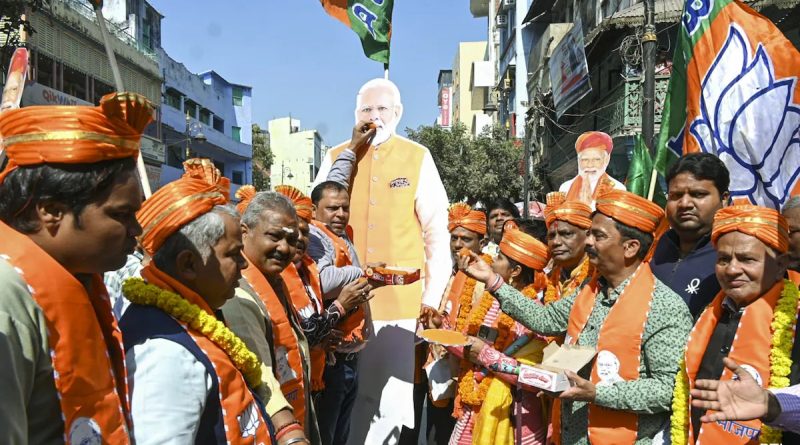The Transformation of Delhi’s Destiny by the Middle Class
The Bharatiya Janata Party (BJP) celebrated a historic victory in Delhi in February 2028, marking a significant milestone in the party’s journey. Prime Minister Narendra Modi, a key figure in the BJP’s success, inaugurated the party’s new headquarters in Delhi in 2018. Since then, the headquarters has become a symbol of victory and celebration for the BJP, with Modi often visiting to address jubilant supporters and leaders.
A Surprising Turn of Events
The recent victory in Delhi came as a surprise to many, as the BJP had been facing tough competition from the Aam Aadmi Party (AAP). Leading up to the election, surveys indicated a sense of dissatisfaction among middle-class voters towards the government. However, Finance Minister Nirmala Sitharaman’s budget announcement, which included a significant tax benefit for the middle class, quickly changed perceptions. The sudden shift in sentiment played a crucial role in the BJP’s victory in Delhi.
Analyzing the Numbers
While the BJP secured a landslide victory in Delhi, the numbers tell a more nuanced story. Despite the BJP’s success, the AAP managed to maintain a formidable vote share of almost 44%. The Congress, on the other hand, saw a marginal improvement in its vote share, highlighting the complex dynamics of the electoral landscape in Delhi. The BJP’s ability to garner nearly 48% of the votes proved to be decisive in securing victory.
Understanding Voter Sentiments
The election in Delhi highlighted a distinct divide among voters based on class dynamics. The middle class and affluent voters largely shifted their support to the BJP, while the disadvantaged class remained loyal to the AAP. This class-based voting pattern underscored the different socioeconomic realities of voters in Delhi and shaped the outcome of the election.
Looking Ahead
As the BJP continues its political momentum, it is crucial to assess the evolving dynamics of voter preferences and sentiments. While the recent victory in Delhi was significant, it also revealed the enduring support for the AAP among a substantial portion of the electorate. The BJP’s challenge moving forward will be to maintain its momentum and expand its support base while addressing the diverse needs and concerns of Delhi’s residents.
In conclusion, the Delhi election of 2028 was a testament to the complex interplay of factors that shape electoral outcomes. The BJP’s victory, fueled by middle-class support and strategic policy decisions, marked a significant milestone in the party’s political journey. As the political landscape continues to evolve, it will be essential for all parties to adapt to changing voter sentiments and aspirations to secure success in future elections.

